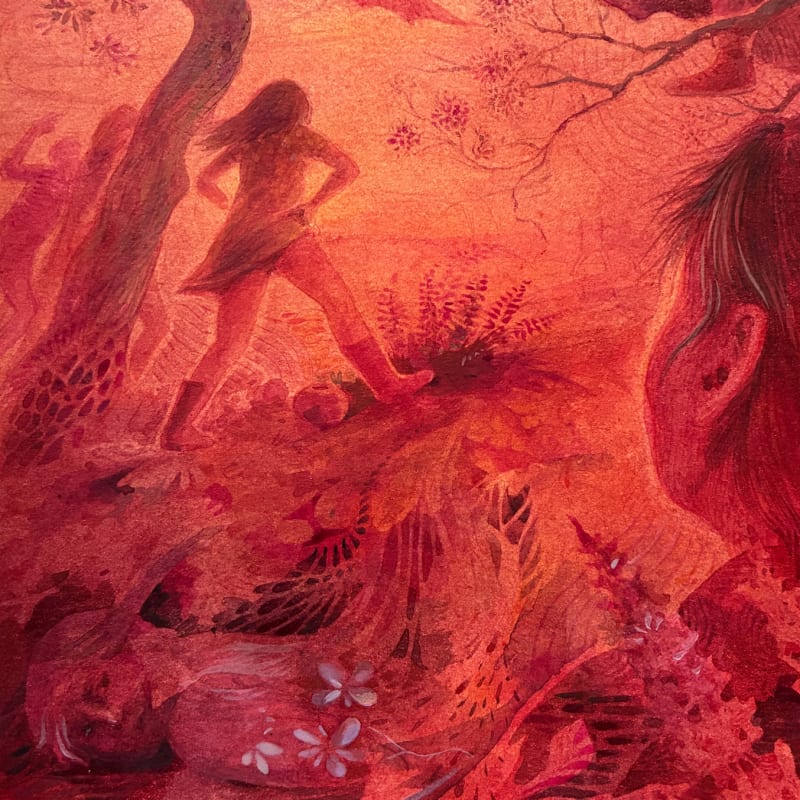illogical at the same time.
Her recent body of work moves closer to the stories she has carried for a long time but kept at arm’s length. Turning towards her past—childhood, the culture she came from, the fractures of war and dictatorship—through the lens of psychoanalysis and memory, the figures and faces that used to hover at the edge of her paintings are now fully here. What once felt too personal, too direct, has become the ground Karpov works from. The paintings draw on her mythology—family stories, buried fears, the strange familiarity of returning to what once frightened her.
Paintings often behave like sedimentary strata—layered, compressed, fractured by absence. Weather systems—psychic and literal—move through these images. A color shift is a change in temperature. A figure appears like pressure rising. The atmosphere isn’t just setting, it’s evidence. Every room breathes. Surfaces condense memory like condensation on glass.
Working primarily with watercolor, gouache, and oil—on linen, paper, and panel—Karpov keeps the palette limited and emotionally precise: cool tones, soft fogs, interrupted by sudden heat or iridescence. Light plays a central role in how the image emerges: sometimes diffused, other times synthetic and unreal. Karpov often builds the surface through layered glazes, cold wax, and slow revision, allowing forms to appear, dissolve, and reassemble. Images develop through repetition and mutation.
The girls Karpov paints—often sisters, doubles, half-memories—occupy unstable spaces: kitchens that become forests, apartments that sprout roots, bowls that hold rivers. Their bodies speak in gestures not language. They are not portraits, but mirrors. Not biography, but weather. Karpov doesn’t try to illustrate memory or deliver narrative, instead painting toward what lingers just beneath: the sediment of unsaid things, the pressure of what wants to surface. Each work becomes a repository of erased stories—containers of things not spoken but still held. Like geology, like weather, they don’t explain. They accumulate.
